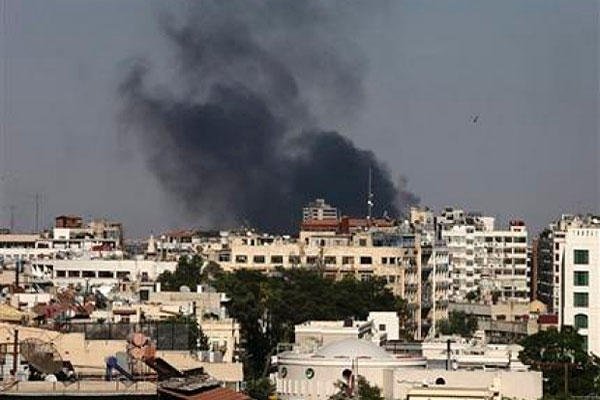A U.S.-led military strike on Syria would probably last only a couple of days, but wreak havoc on the country's command and control facilities, air defenses and aircraft, analysts said.
The White House may as early as Thursday order a military intervention in the war-torn country after accusing Syrian President Bashar Assad's regime of using chemical weapons against civilians. The Aug. 21 attack around Damascus reportedly killed at least a few hundred people and may be the deadliest since Saddam Hussein's forces killed thousands of Kurds with Sarin gas in 1988.
President Barack Obama last year indicated the use of such weapons would cross a "red line," and the administration this week has escalated its rhetoric against the regime and asked the Defense Department to prepare options for a possible strike. Warships have moved into position in the Mediterranean Sea, leaving many to believe an intervention is imminent.
"It would seem kind of an odd thing to do to go that far out on a limb and then pull back," a defense analyst who wasn't authorized to speak on the record said in a telephone interview with Military.com. "You would lose a lot of face to back down."
More than 100,000 people have died in the two-year-old uprising against forces loyal to Assad, according to a June estimate from the U.K.-based Syrian Observatory for Human Rights, which tracks the death toll through a network of activists in the country.
Some members of Congress, even Republicans who pushed for a U.S. military intervention in Syria, are demanding that Obama seek congressional approval before launching a strike.
"I expect the commander in chief would consult with Congress in the days ahead as he considers the options available to him," Rep. Howard "Buck" McKeon, R-Calif., chairman of the House Armed Services Committee, said in a statement.
The U.S. and allies are unlikely to launch an attack before Thursday, when British Prime Minister David Cameron was to convene an emergency meeting of Parliament to vote on a motion to authorize a military response, ABC News reported.
The U.S. and Britain are amassing a naval armada in the Mediterranean within striking distance of Syria. Four Norfolk, Va.-based destroyers -- the USS Ramage, USS Mahan, USS Barry and USS Gravely -- are already in position, standing by to launch cruise missiles, The Virginian-Pilot reported.
Any air campaign would probably involve launching a series of Tomahawk Land Attack Missiles, or TLAMs, from ships against such targets as command and control facilities, air defenses and aircraft, according to Mark Gunzinger, a senior fellow at the Center for Strategic and Budgetary Assessments, a research organization in Washington, D.C.
"A limited campaign would certainly go after command and control facilities that are used to orchestrate the use of air power, as well as strikes to take out aircraft," Gunzinger said in a telephone interview with Military.com. "Some of these strikes would also go after support facilities -- fuel depots, weapons storage areas -- that are critical to aircraft operations."
The mission may also involve dropping GPS- and laser-guided bombs from such aircraft as F-15 and F-22 fighter jets and B-2 and B-52 bombers, though the U.S. probably won't target chemical weapons or stockpiles because they're more difficult to track and pose a threat to civilians, analysts said.
A strike would send "a very strong signal that the use of weapons of mass destruction -- chemical weapons -- is not going to be tolerated by the international community," Gunzinger said. "Beyond that, this is also an opportunity, frankly, to take down some of their aircraft that the Syrian forces are using to great effect" and potentially change the balance of the war, he said.
Others are more skeptical.
Michael O'Hanlon, a senior fellow at the Brookings Institution, a Washington, D.C.-based think tank, said the Syrian civil war "will rage on" despite a cruise-missile attack, according to an op-ed published Aug. 26 on the website Politico. A political settlement between the warring factions will take time to negotiate and keeping the peace may require sending 10,000 or more U.S. troops to the country, he wrote.
"Limited military action today might help re-establish U.S. credibility and deterrence, but will likely not meaningfully affect the trajectory of the conflict," he wrote.
An air campaign in Syria would be far more challenging than the 2011 allied attack against Libya, analysts said. Syria has denser population centers and more sophisticated air defenses, such as SA-2 and SA-5 surface-to-air missile batteries that are aging but still capable of shooting down aircraft, they said.





























